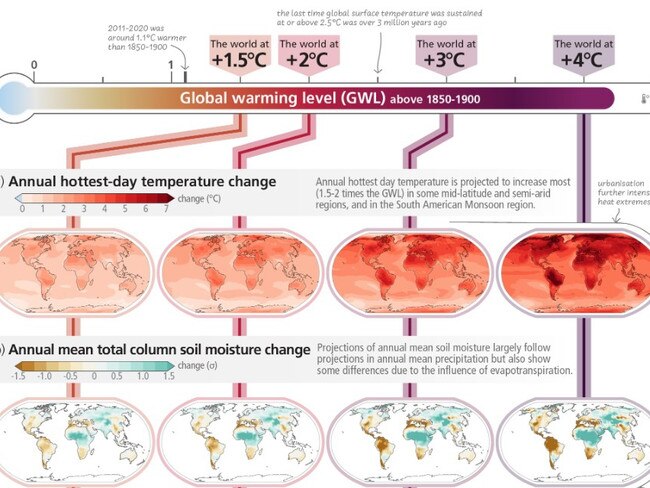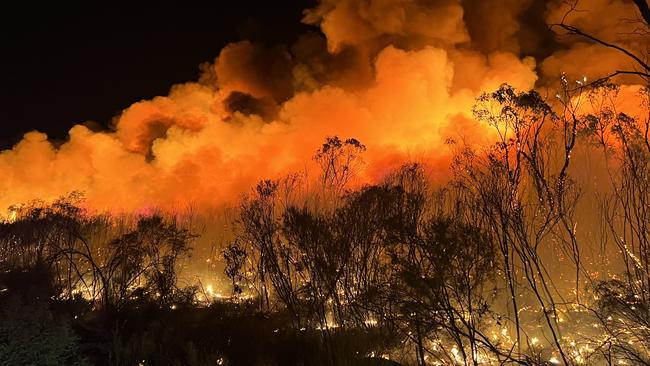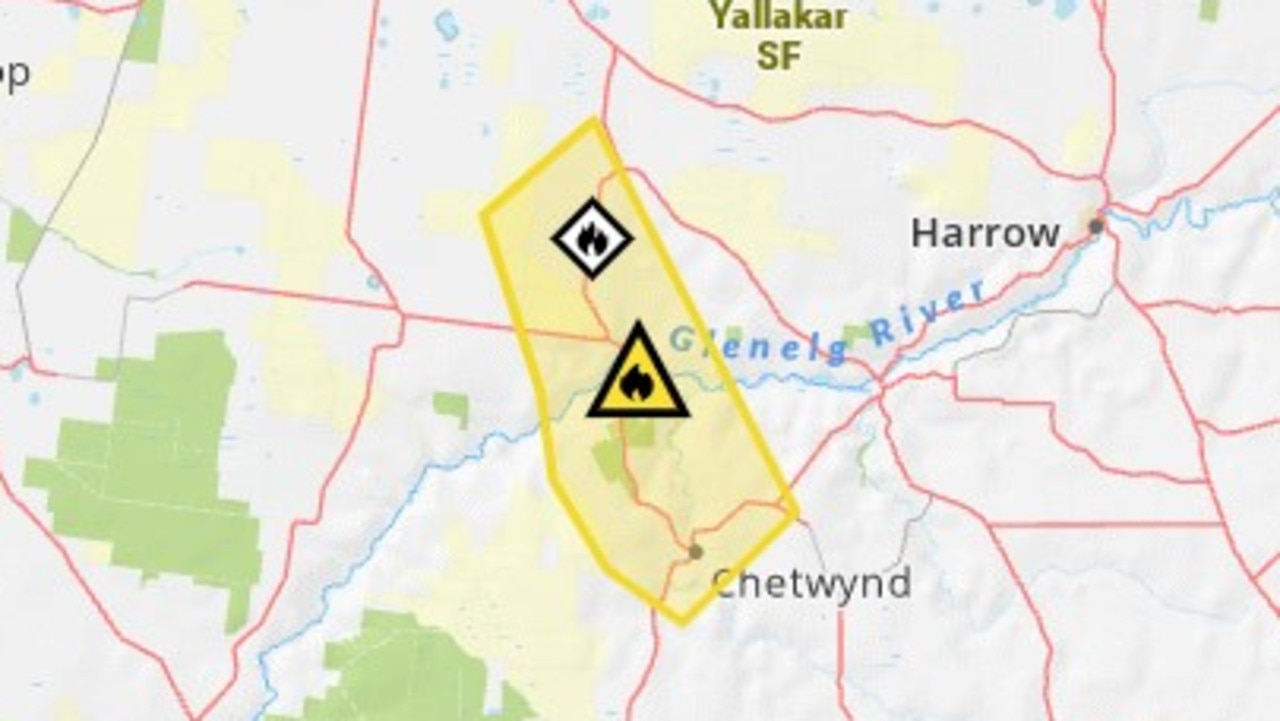Map reveals dire outlook for Australia’s future
A global map released today has shown that Australia could become an extremely difficult place to live if action isn’t taken.

Climate Change
Don't miss out on the headlines from Climate Change. Followed categories will be added to My News.
A new report from the United Nations has said the “window is narrowing” to meet the goal of the planet only warming by 1.5 degrees.
And a map released with the report has revealed exactly what missing that goal could mean for Australia. It shows the country’s hottest annual day could be approaching 6C degrees warmer than now.
The report by the Intergovernmental Panel on Climate Change (IPCC) warned that the world could cross the 1.5 degree global warming limit in about a decade.
It’s already at 1.1 degrees.
The report “sets out in very, very stark terms where we are, but it also signals that there is still an opportunity with significant global effort to meet that 1.5 [degree] goal,” Simon Stiell, head of the United Nations Framework Convention on Climate Change (UNFCCC), told AFP in Copenhagen.
“That window is narrowing, but the window is still there,” he said, adding that “everyone” should work to fight global warming.
“To be more specific, we know that 80 per cent of emissions are generated within the G20 [which includes Australia]. That is the very, very clear starting point.
“They have 85 per cent of global GDP. So the technology, the financial capacity to address the crisis resides there.”
Australia’s overall contribution to world emissions is only around 1.5 per cent of the total. That’s far exceeded by China, the US, India and Russia.
However adjusted for population size, Australia’s per capita emissions put it just outside the top 10 of the world’s worst polluters. Strip out smaller nations – which can skew results – and Australia is easily in the top 10 and ahead of the biggest overall emitters.

Australia’s hottest day will be even hotter
The report details what changes a rising temperature would bring to Australia.
If global temperatures could be kept to 1.5 degrees above pre-industrial levels, Australia’s annual hottest data would perhaps only be 1C warmer.
At 3 degrees hotter around the world, Australia’s warmest day would also be around 3 degrees hotter. But at a rise of 4 degrees globally, Australia could see temperatures go up 4-5 degrees and maybe even 6 degrees leading to more sweltering days.
On January 4, 2020, Penrith, in Sydney’s west, became the hottest place on Earth at 48.9C. Under some UN scenarios, Penrith could see some days above 50C in the future.
And Australia wouldn’t even be the worst affected part of the planet.
Parts of Latin America including the Amazon are looking at hikes in the hottest day temperature by 7 degrees or warmer. Similar rises might be seen around the Arctic.
“Today’s IPCC report is a how-to guide to defuse the climate time bomb. It is a survival guide for humanity. As it shows, the 1.5-degree limit is achievable,” said United Nations chief Antonio Guterres.
“But it will take a quantum leap in climate action.”
Swedish climate activist Greta Thunberg has also commented.
“The fact that the people in power still somehow live in denial, and actively move in the wrong direction, will eventually be seen for and understood as the unprecedented betrayal it is,” she said.

More dangerous fires for Australia
A CSIRO report on Australia’s climate, released in November, forecast dangerous bushfires will rage for longer, torrential downpours will become more common and unrelenting heatwaves will devastate communities across Australia.
The 2022 State of the Climate report, released by CSIRO and the Bureau of Meteorology, revealed the continent is 1.47C hotter than it was in 1910.
In addition, sea surface temperatures have increased by an average of 1.05C since 1900, and sea levels are rising at an accelerated rate.
And while Australia has experienced one of the most significant flood periods ever observed during the La Nina event over the last few years, overall there’s been a decline in rainfall between April and October across southern Australia in recent decades.
That’s contributing to longer fire seasons, according to Karl Braganza from the Bureau of Meteorology.
“We’re expecting to see longer fire seasons in the future for the south and east and an increase in the number of dangerous fire weather days,” Dr Braganza said.
– with AFP
Originally published as Map reveals dire outlook for Australia’s future





